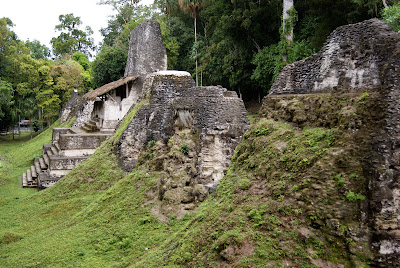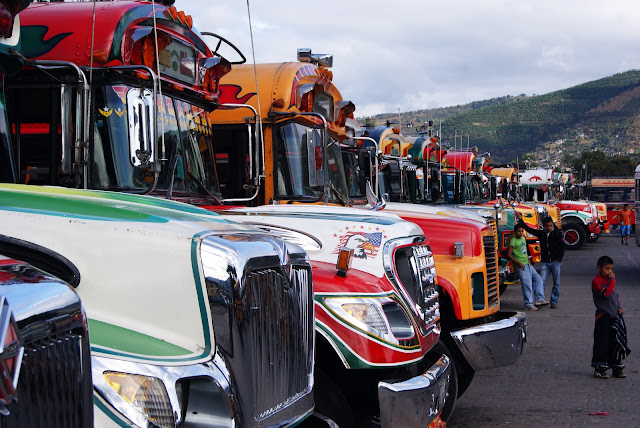Despite years of Spanish influence followed by the rapid
changes of modernization, Guatemala’s indigenous population has maintained a
strong grip on their traditions. Ever-present in their vibrant choice of
clothes, their food, medicine, and religious practices are no less strong.
However, when it comes to religion, there is a definite blending of two strong
cultures: Catholic and Mayan.
During our stay in the Highland town of Quetzaltenango
(commonly known by its Mayan tag, Xela), we were lucky enough to make a day
trip to the tiny hillside town of San Andrés Xecul. More fortunate still, we
happened to arrive on the day of the town festival, where a marketplace, a fair,
and a massive religious buffet swirled together riotously.
It is common in Latin American countries for each city, no
matter how small, to have an annual festival, typically lasting a day or two
and celebrating the city’s patron saint. San Andrés Xecul is no different on
these counts, its patron saint being Saint Andrew the Apostle, whose feast day
is November 30th.
San Andrés Xecul is known primarily for its church, a
multicolored Mayan-Catholic-Christian affair, covered in vivid depictions of
saints, animals, and agricultural motifs on a bright yellow façade. Inside,
neon lights and painted Jesus statues abound. In a country (and faith) of
silent, stony cathedral faces with their solemn images, this church is as loud
and flashy as they come.
Multihued flags waved over the square in front of their
yellow church, a crowd gathered to watch traditional masked dancers. Assorted
animals mingled with what we can only assume are conquistadors as they prance
about to the music pouring over the audience. Without knowing the meaning of
the dance, or possessing adequate Spanish skills to ask, the display was
perplexing and delightful.
Corn basked in rooftop sun. Thread of red and blue, green
and black, swayed in the breeze, drying, waiting to be crafted into blankets
and cloth. Meats and baked goods tempted passersby, rich and sweet. Trinkets
and toys waited to be won at carnival games. Old women, skin wrinkled from
years of sun, displayed big gummy grins full of gaps. Babies, strapped to the
backs of their mothers, napped in the midday heat, happy in their personal
hammocks.
And we, as lone tourists, tried to take it all in – the
colors, the cacophony, the barrage of scents and sights – all the wonders of
Mayan culture colliding with the modern and holding its ground, sharing the
limelight.


































